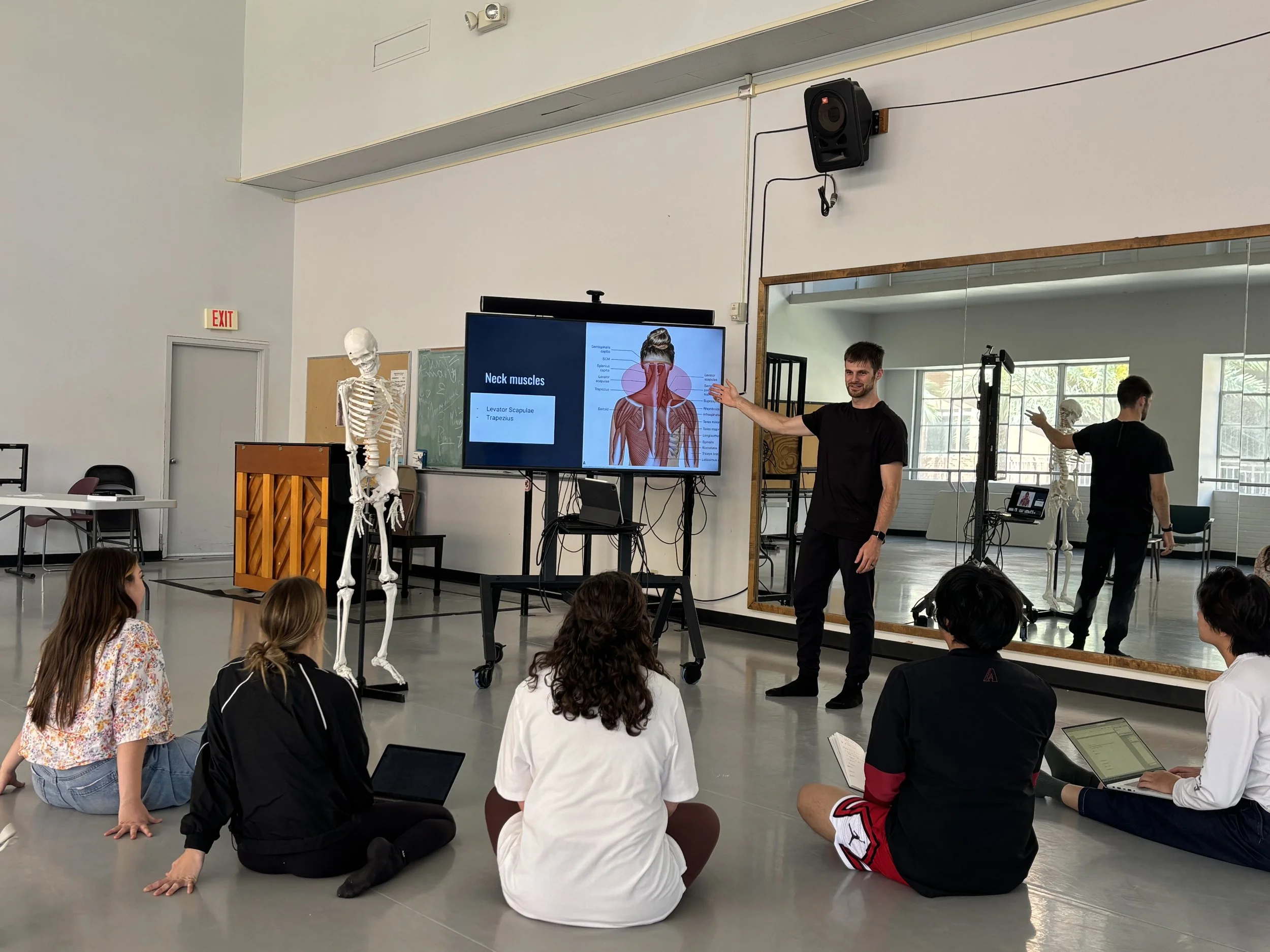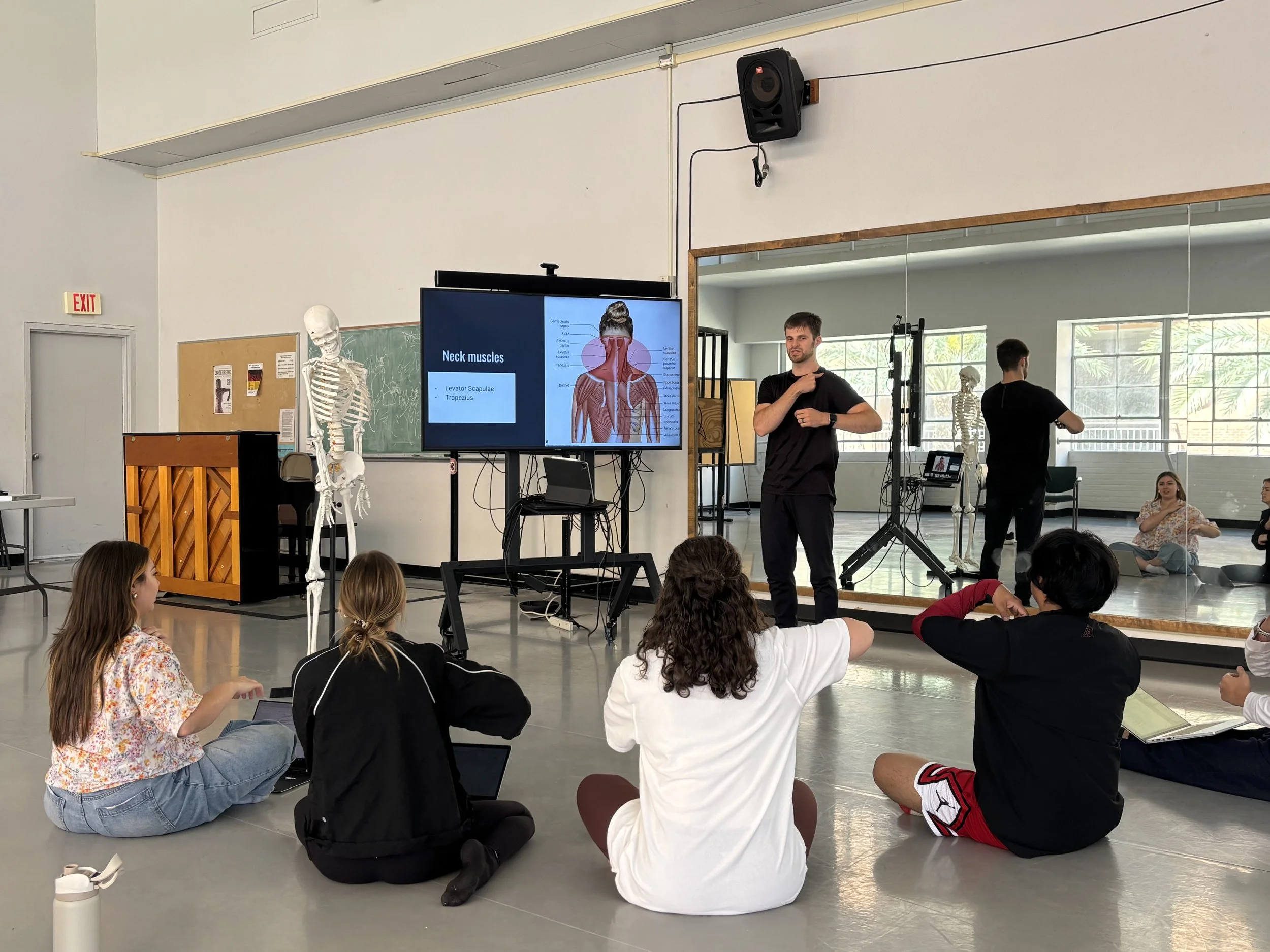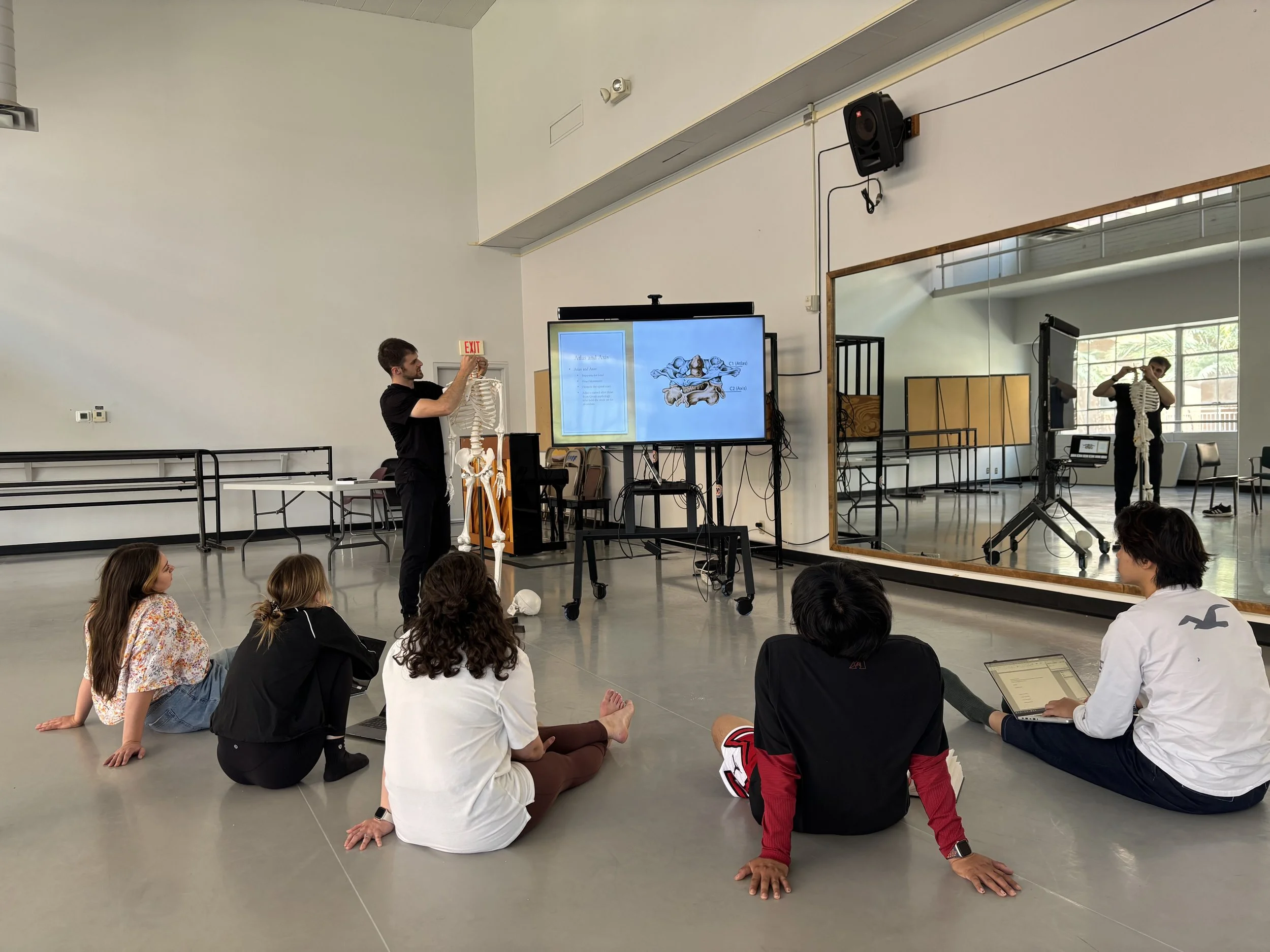Anatomy and Imagery
DCE 531: Guest Teaching Anatomy and Imagery at ASU
I recently had the pleasure of being invited as a guest instructor for DCE 531 Somatics II, a graduate-level course in Arizona State University’s MFA Dance program. The session focused on the dynamic relationship between the skeletal and muscular systems and how these anatomical structures work together to generate and support movement.
We began with the objective of identifying tools and concepts that might help dancers deepen their internal awareness, using the mind’s eye to strengthen the connection between body and mind through science and imagery. By exploring the analytical foundations of movement and viewing bones and muscles not as static elements but as integrated systems, we considered how structure informs motion.
From this grounded understanding, we transitioned into a discussion on the role of imagery in somatic practice and teaching. Together, we explored the creative possibilities that imagery offers, not only as a way to facilitate movement, but also as a means of deepening our connection to the body, refining choreographic intention, and enriching pedagogical approaches.
My own studies and experiences in movement, human anatomy, kinesiology, and somatic practices have cultivated in me a deep appreciation for the human body, its complexity, its capacity, and its beauty. I find the body endlessly fascinating. Not only for what it can do, but for how it communicates, adapts, and expresses it’s self in movement. Dance, in particular, offers a unique pathway for the mind and body to work in harmony. It becomes a conduit for freedom, flow, and resilience, helping us move through not only space, but life itself.
The material for this session was developed through a combination of original PowerPoint presentations and selected readings from two foundational academic texts by Franklin, E.N. &Hackney, P. My objective was to facilitate an experience that bridged anatomical insight with creative and somatic exploration, offering students a toolkit they could carry into their own dance practices and teaching.
It was an honor to contribute to the educational journey of ASU’s talented MFA dance students, and I’m grateful for the opportunity to share my work in such a thoughtful and embodied learning environment.
Power Points
References
Franklin, E. N. (2023). Dynamic alignment through imagery. Human Kinetics.
Hackney, P. (2015). Making connections: Total body integration through bartenieff fundamentals. Routledge.




